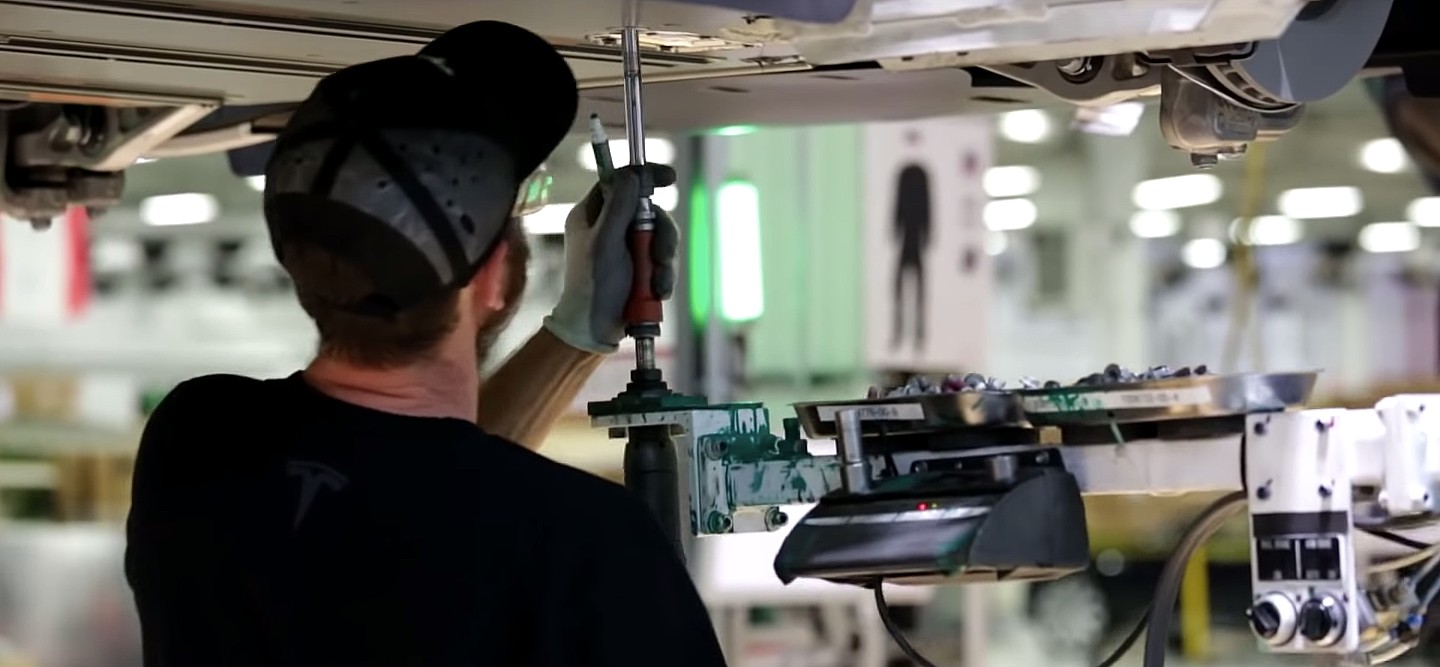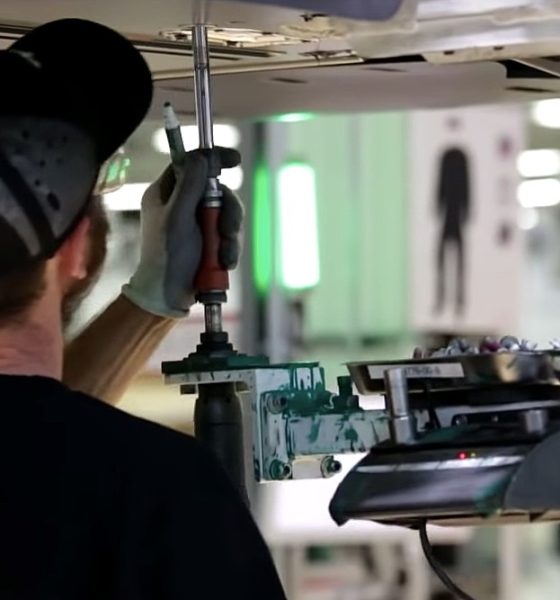

News
Tesla improves worker safety, halves injuries at Fremont plant in 2019
Tesla reduced the number of injuries within the production lines in its Fremont plant. The company released a blog post stating the number of incidents that harmed workers was reduced by more than 50% in 2019 compared to 2018.
Statistics shared by the company stated the decrease in the number of injuries was due to preventative measures meant to reduce the frequency of accidents happening within the plant. Tesla states that 2019 was one of its safest years as a company within its Fremont facility where rumors have circulated that safety violations were at an all-time high in 2018, according to an article from Forbes.
The California Division of Occupational Safety and Health (Cal/OSHA) confirmed Tesla’s claim that it reduced injuries in its Fremont plant by more than half the amount compared to the previous year. Cal/OSHA stated that Tesla’s safety record-keeping is 99% accurate, and the company maintains that the data on injuries is critical for identifying and preventing future risks from occurring.
Employees at the Fremont plant also spent less time away from work in 2019 because of injuries or illnesses. Tesla reports their Days Away and Restricted Time, or DART, improved by 12% compared to the year before. This could be a key indicator behind the increased production rates and improved build quality of vehicles that Tesla customers have reported over the past year.
“People, our most important asset, are at the top of our accomplishments. Our employee safety engagement program, which we expanded to manufacturing sites globally, encourages employees to think and talk about safety every day. The program leverages the brainpower of our employees—from production associates to engineers—to continuously improve processes and ensure our safety culture is the best in the world,” the blog post stated.
The company is also assisting other automakers to improve safety within production plants across the world. In 2019, Tesla hosted an automotive safety forum with over 100 safety professions from some of the world’s biggest car manufacturers. Representatives from Subaru, Volkswagen, Honda, Toyota, and more were in attendance to share practices and ideas to create safer work environments for employees who are responsible for building safe modes of transportation for the average human being to use.
This year, Tesla wants to improve even more by offering physical and mental health evaluations for its employees. In addition to these services, Fremont, Gigafactory 1 in Nevada, and Gigafactory 3 in Shanghai will all receive their own on-site medical clinics so employees can be treated in a fast and efficient manner in the event of an injury.
Tesla is creating a culture of safety throughout its facilities and on the road. The aim of driving a Tesla vehicle is not only to offer the driver a fun experience through industry-leading performance and technology but to also make them feel safe and secure if an accident was to occur. Meanwhile, in the production facilities, the company is taking every step possible to prevent injuries from occurring so employees can focus on the ramping its production numbers.
You can read Tesla’s blog post here.

News
Tesla Model 3 named New Zealand’s best passenger car of 2025
Tesla flipped the switch on Full Self-Driving (Supervised) in September, turning every Model 3 and Model Y into New Zealand’s most advanced production car overnight.

The refreshed Tesla Model 3 has won the DRIVEN Car Guide AA Insurance NZ Car of the Year 2025 award in the Passenger Car category, beating all traditional and electric rivals.
Judges praised the all-electric sedan’s driving dynamics, value-packed EV tech, and the game-changing addition of Full Self-Driving (Supervised) that went live in New Zealand this September.
Why the Model 3 clinched the crown
DRIVEN admitted they were late to the “Highland” party because the updated sedan arrived in New Zealand as a 2024 model, just before the new Model Y stole the headlines. Yet two things forced a re-evaluation this year.
First, experiencing the new Model Y reminded testers how many big upgrades originated in the Model 3, such as the smoother ride, quieter cabin, ventilated seats, rear touchscreen, and stalk-less minimalist interior. Second, and far more importantly, Tesla flipped the switch on Full Self-Driving (Supervised) in September, turning every Model 3 and Model Y into New Zealand’s most advanced production car overnight.
FSD changes everything for Kiwi buyers
The publication called the entry-level rear-wheel-drive version “good to drive and represents a lot of EV technology for the money,” but highlighted that FSD elevates it into another league. “Make no mistake, despite the ‘Supervised’ bit in the name that requires you to remain ready to take control, it’s autonomous and very capable in some surprisingly tricky scenarios,” the review stated.
At NZ$11,400, FSD is far from cheap, but Tesla also offers FSD (Supervised) on a $159 monthly subscription, making the tech accessible without the full upfront investment. That’s a game-changer, as it allows users to access the company’s most advanced system without forking over a huge amount of money.
News
Tesla starts rolling out FSD V14.2.1 to AI4 vehicles including Cybertruck
FSD V14.2.1 was released just about a week after the initial FSD V14.2 update was rolled out.

It appears that the Tesla AI team burned the midnight oil, allowing them to release FSD V14.2.1 on Thanksgiving. The update has been reported by Tesla owners with AI4 vehicles, as well as Cybertruck owners.
For the Tesla AI team, at least, it appears that work really does not stop.
FSD V14.2.1
Initial posts about FSD V14.2.1 were shared by Tesla owners on social media platform X. As per the Tesla owners, V14.2.1 appears to be a point update that’s designed to polish the features and capacities that have been available in FSD V14. A look at the release notes for FSD V14.2.1, however, shows that an extra line has been added.
“Camera visibility can lead to increased attention monitoring sensitivity.”
Whether this could lead to more drivers being alerted to pay attention to the roads more remains to be seen. This would likely become evident as soon as the first batch of videos from Tesla owners who received V14.21 start sharing their first drive impressions of the update. Despite the update being released on Thanksgiving, it would not be surprising if first impressions videos of FSD V14.2.1 are shared today, just the same.
Rapid FSD releases
What is rather interesting and impressive is the fact that FSD V14.2.1 was released just about a week after the initial FSD V14.2 update was rolled out. This bodes well for Tesla’s FSD users, especially since CEO Elon Musk has stated in the past that the V14.2 series will be for “widespread use.”
FSD V14 has so far received numerous positive reviews from Tesla owners, with numerous drivers noting that the system now drives better than most human drivers because it is cautious, confident, and considerate at the same time. The only question now, really, is if the V14.2 series does make it to the company’s wide FSD fleet, which is still populated by numerous HW3 vehicles.
News
Waymo rider data hints that Tesla’s Cybercab strategy might be the smartest, after all
These observations all but validate Tesla’s controversial two-seat Cybercab strategy, which has caught a lot of criticism since it was unveiled last year.

Toyota Connected Europe designer Karim Dia Toubajie has highlighted a particular trend that became evident in Waymo’s Q3 2025 occupancy stats. As it turned out, 90% of the trips taken by the driverless taxis carried two or fewer passengers.
These observations all but validate Tesla’s controversial two-seat Cybercab strategy, which has caught a lot of criticism since it was unveiled last year.
Toyota designer observes a trend
Karim Dia Toubajie, Lead Product Designer (Sustainable Mobility) at Toyota Connected Europe, analyzed Waymo’s latest California Public Utilities Commission filings and posted the results on LinkedIn this week.
“90% of robotaxi trips have 2 or less passengers, so why are we using 5-seater vehicles?” Toubajie asked. He continued: “90% of trips have 2 or less people, 75% of trips have 1 or less people.” He accompanied his comments with a graphic showing Waymo’s occupancy rates, which showed 71% of trips having one passenger, 15% of trips having two passengers, 6% of trips having three passengers, 5% of trips having zero passengers, and only 3% of trips having four passengers.
The data excludes operational trips like depot runs or charging, though Toubajie pointed out that most of the time, Waymo’s massive self-driving taxis are really just transporting 1 or 2 people, at times even no passengers at all. “This means that most of the time, the vehicle being used significantly outweighs the needs of the trip,” the Toyota designer wrote in his post.
Cybercab suddenly looks perfectly sized
Toubajie gave a nod to Tesla’s approach. “The Tesla Cybercab announced in 2024, is a 2-seater robotaxi with a 50kWh battery but I still believe this is on the larger side of what’s required for most trips,” he wrote.
With Waymo’s own numbers now proving 90% of demand fits two seats or fewer, the wheel-less, lidar-free Cybercab now looks like the smartest play in the room. The Cybercab is designed to be easy to produce, with CEO Elon Musk commenting that its product line would resemble a consumer electronics factory more than an automotive plant. This means that the Cybercab could saturate the roads quickly once it is deployed.
While the Cybercab will likely take the lion’s share of Tesla’s ride-hailing passengers, the Model 3 sedan and Model Y crossover would be perfect for the remaining 9% of riders who require larger vehicles. This should be easy to implement for Tesla, as the Model Y and Model 3 are both mass-market vehicles.









